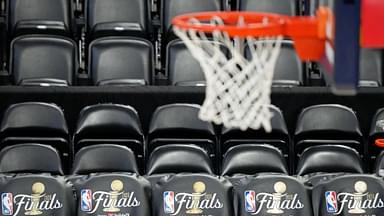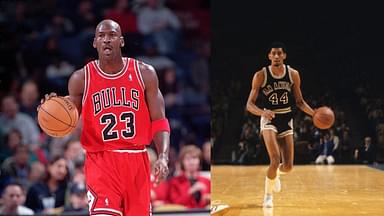Spencer Haywood is a Hall of Famer from the 1970s who became famous for a number of reasons. Firstly, he won the ABA MVP in his rookie season, a feat that has only been accomplished by two other NBA players. Secondly, he challenged the NCAA and pushed to come out of college early to play. He had his reasons, and ultimately, Haywood fit right in once he got to the league.
Advertisement
It was a different time back in the 1960s. The basketball landscape was still quite split. There was the NBA, known for its structured, professional, and tactful style. Then there was the ABA, known for its high-scoring affairs, the three-point shot, and innovative styles of play. Yet both required a player to compete in college for four seasons before entering their leagues.
This all changed once Haywood decided to leave his college, Detroit Mercy, after just his sophomore year. He wanted to play in the ABA, and teams around the league wanted him too.
“I had left college, and that was a big, big commotion because all of a sudden the ABA was allowing me to come and play,” Haywood shared on ALL THE SMOKE.
The NCAA used to enforce pro rules back then. They stipulated a four-year rule, stating that players weren’t allowed to turn pro until their college class had graduated. But Haywood challenged the notion.
Eventually, Haywood and the Seattle SuperSonics took the ABA to court, and they won. “We are allowing Haywood to play because he’s in dire need. It’s called a hardship rule,” Haywood recalled the court stating.
Haywood’s parents were still working back home in Mississippi, earning just $2 a day. With this in mind, he wanted to provide for them as early as possible. That’s ultimately how he pushed the NCAA to drop the four-year rule, which has since been reformed.
After that, the rest was history. Haywood’s case paved the way for other young athletes who would go on to become stars in their respective leagues.
“I was a test case. And right after that test case, we had Julius Erving, George Gervin, all of the guys coming in.”
Julius Erving entered the ABA at just 21 years old and played for the Virginia Squires in his rookie year. He averaged 27 points per game and over 15 rebounds while shooting almost 50% from the field. Clearly, he fit right in, and the league was happy to have him entertaining audiences.
Of course, we know that Erving, like Haywood, would eventually become a Hall of Famer. Once the NBA and ABA merged in 1976, both players transitioned seamlessly and became champions, proving they didn’t need to spend four years in college to hold their own among the pros.
Today, Haywood’s case is still referenced in discussions about player eligibility from the NCAA to the NBA. Now, players don’t need to spend any years in college to enter the league. They simply need to be 19 years old and one year removed from high school. This has led to more players going overseas, although college one-and-dones remain common across the league.








